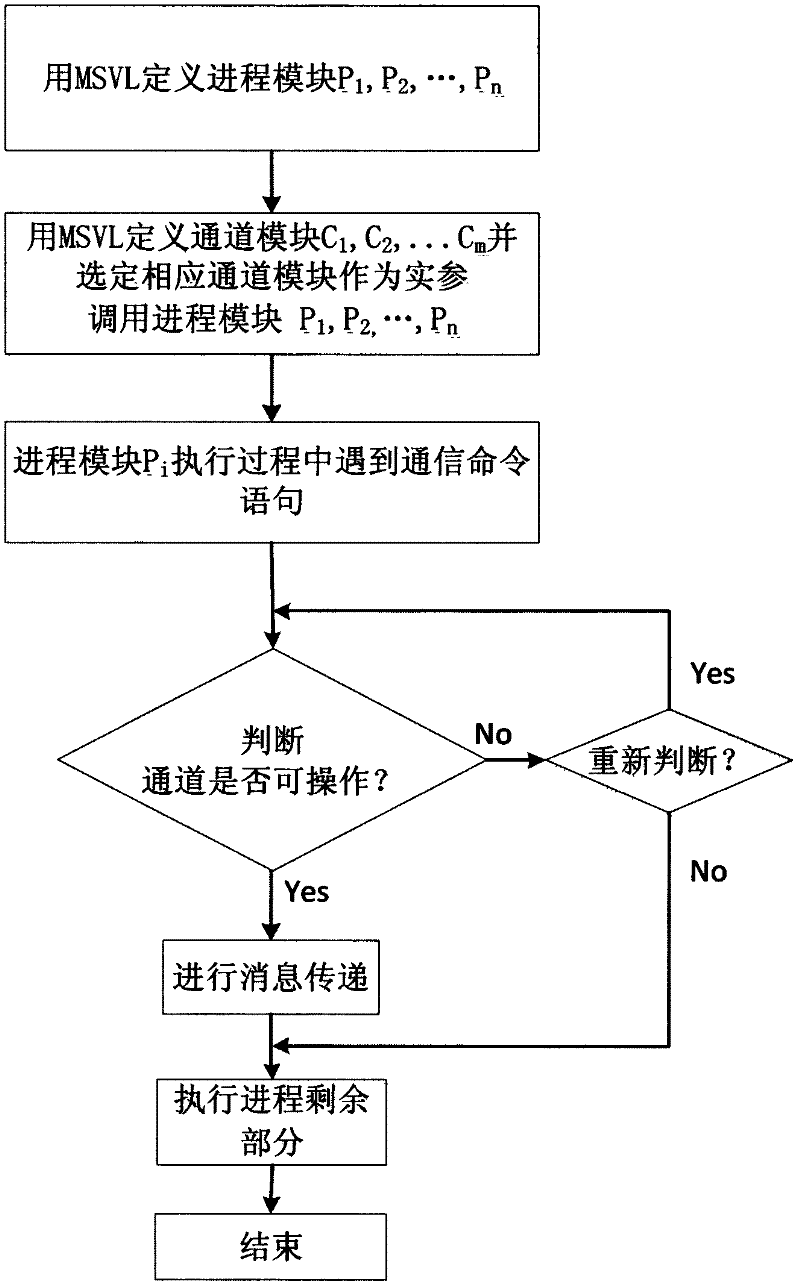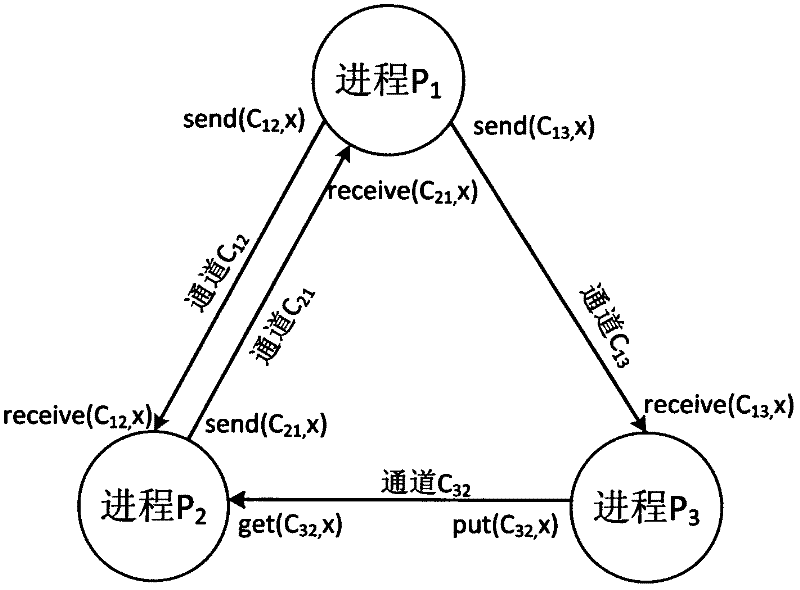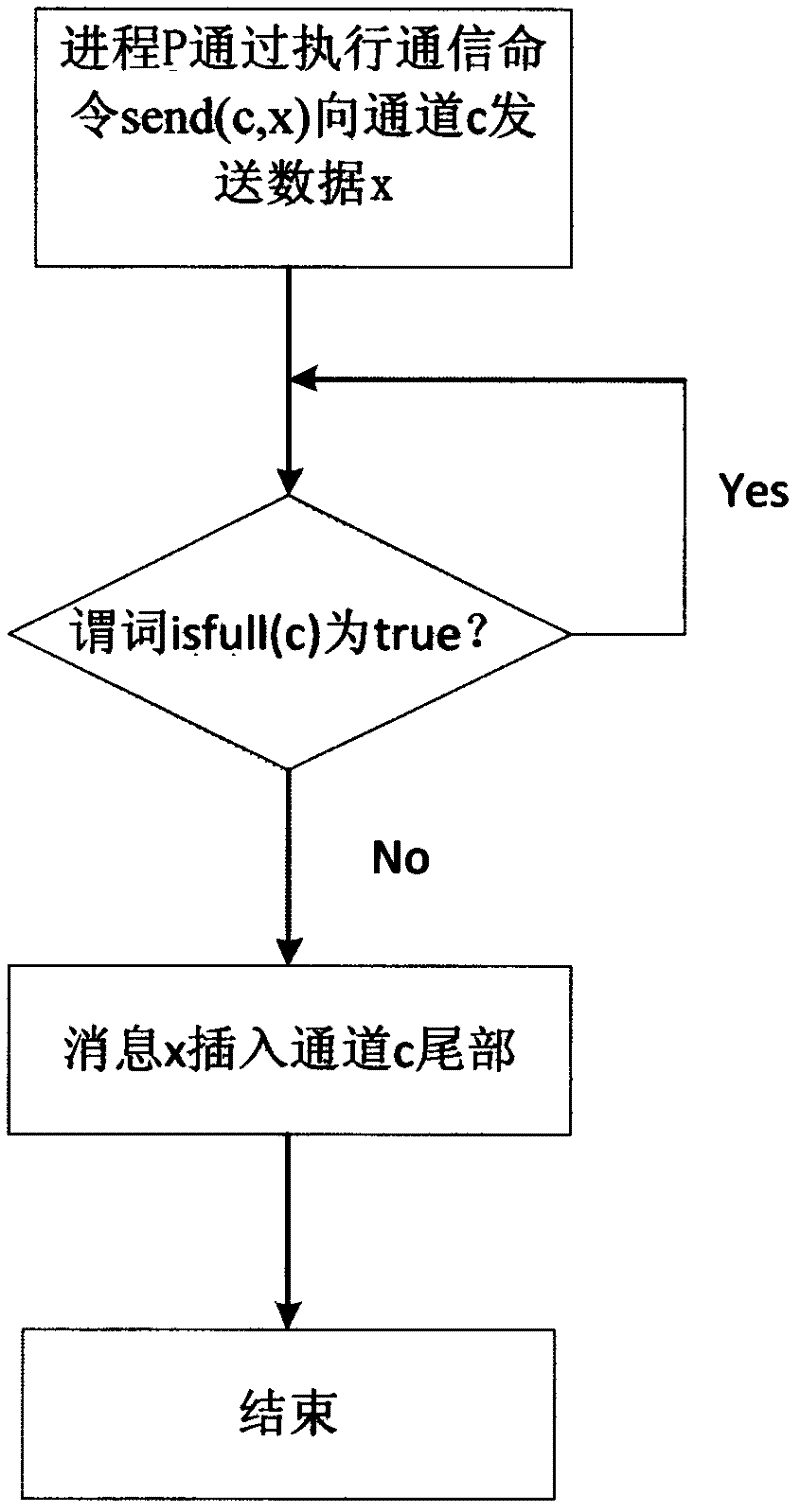Modeling simulation verification language (MSVL) asynchronous communication system and method
An asynchronous communication and asynchronous technology, applied in transmission system, inter-program communication, multi-program device, etc., can solve problems such as undiscovered reports or literature, achieve clear program structure, increase reusability, and achieve flexible effects
- Summary
- Abstract
- Description
- Claims
- Application Information
AI Technical Summary
Problems solved by technology
Method used
Image
Examples
Embodiment 1
[0061] The present invention is an MSVL asynchronous communication system, which is used to model and verify the asynchronous concurrent system. The various components of the asynchronous concurrent system are distributed in different locations, and there is a certain communication relationship between different components, such as a multi-party contract The signing agreement can be regarded as an asynchronous concurrent system, and different signatories need to communicate to exchange signatures on the contract. The MSVL asynchronous communication system includes a process module, a channel module and a communication command. The process module is connected through the channel module, and the asynchronous communication process is realized through the communication command. The process module, the channel module and the communication command are all defined based on MSVL.
[0062] see figure 2 , figure 2 The asynchronous concurrent system shown is composed of three componen...
Embodiment 2
[0102] The MSVL asynchronous communication system and method are the same as in Embodiment 1, and the defined channel module is used as the actual parameter called by the process module to connect the process module, and the number of channel actual parameters imported in each process module is determined by the communication needs of the modeled system OK, refer to figure 2 As shown, the process module P is defined in MSVL 1 , P 2 , P 3 and channel module C 12 , C 21 , C 32 , C 13 , and select the channel module as an actual parameter to call the corresponding process module, the specific MSVL statement is as follows: proc P 1 (C 1 , C 2 , C 3 )={...send(C 1 , x 1 );...receive(C 2 ,y);...;send(C 3 , x 2 )};proc P 2 (C 1 , C 2 , C 3 )={...receive(C 1 ,x);...send(C 2 ,y1);...;get(C 3 ,y 2 )};proc P 3 (C 1 , C 2 )={...put(C 1 ,x);...receive(C 2 ,y)}; chn C 12 (3) and chn C 21 (3) and chn C 13 (1) and chn C 32 (1)and(P 1 (C 12 , C 21 , C 13 )||...
Embodiment 3
[0105] MSVL asynchronous communication system and method are the same as embodiment 1, 2, define send (c, x) and receive (c, y) with MSVL to describe the communication process of the asynchronous concurrent system that does not have timeout mechanism, define put (c, y) with MSVL x) and get(c, y) to describe the communication process of an asynchronous concurrent system with a timeout mechanism. refer to figure 2 And according to the MSVL definition in Embodiment 2, the process module P 1 and P 2 and P 1 and P 3 There is no timeout mechanism in the asynchronous communication process between them. Once the process module executes the communication command, the process module will exit the command only after the message is sent or received successfully, and it cannot exit in advance by timeout, while the P 2 and P 3 There is a timeout mechanism in the asynchronous communication process between P 3 via channel module C 32 to P2 When sending a message, if C 32 is full, the...
PUM
 Login to View More
Login to View More Abstract
Description
Claims
Application Information
 Login to View More
Login to View More - R&D
- Intellectual Property
- Life Sciences
- Materials
- Tech Scout
- Unparalleled Data Quality
- Higher Quality Content
- 60% Fewer Hallucinations
Browse by: Latest US Patents, China's latest patents, Technical Efficacy Thesaurus, Application Domain, Technology Topic, Popular Technical Reports.
© 2025 PatSnap. All rights reserved.Legal|Privacy policy|Modern Slavery Act Transparency Statement|Sitemap|About US| Contact US: help@patsnap.com



